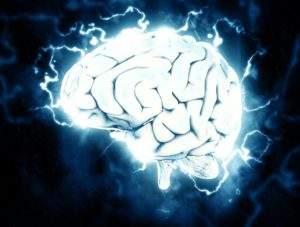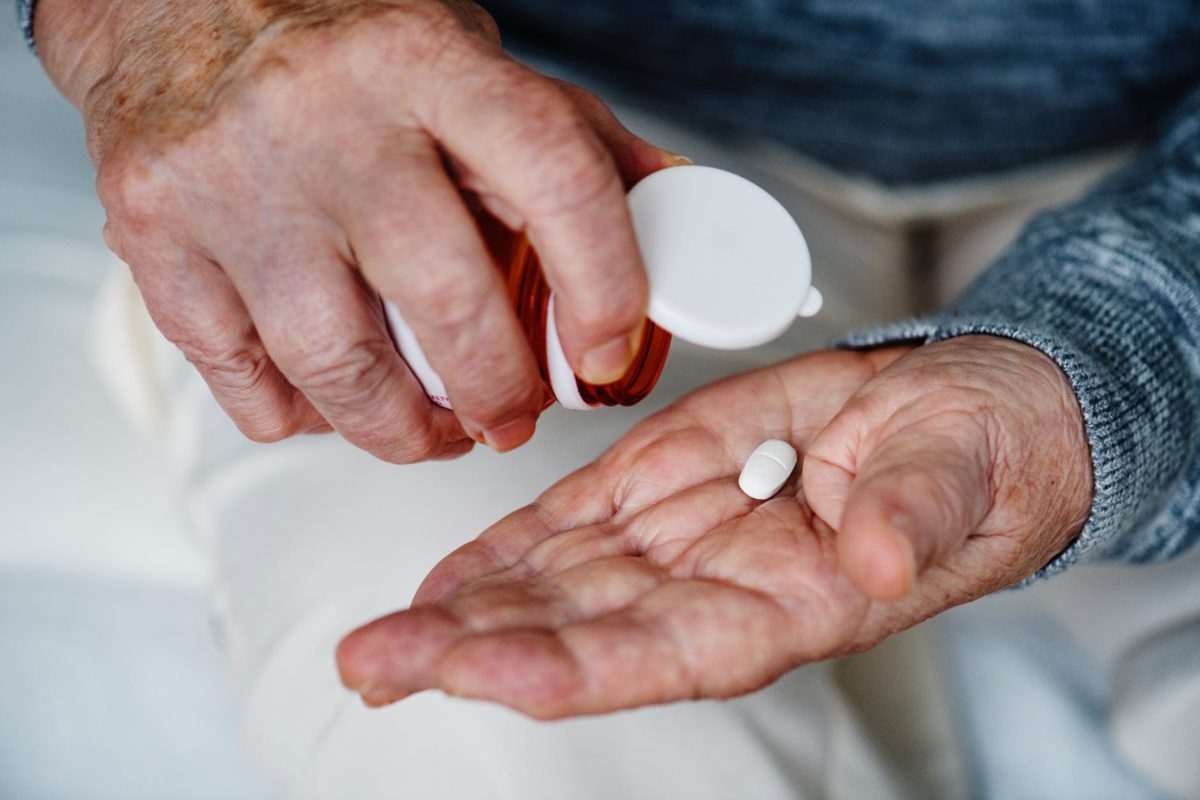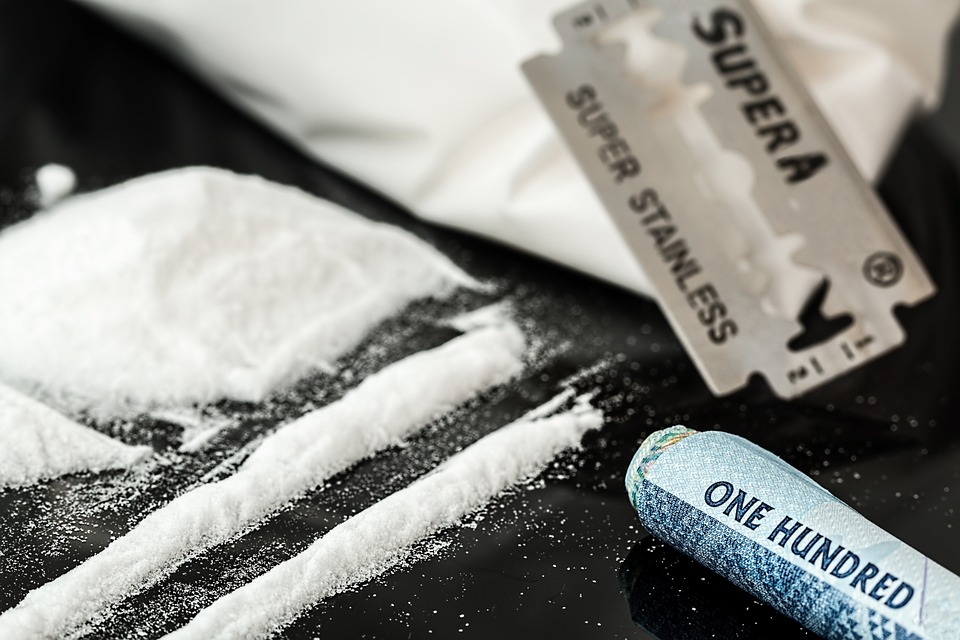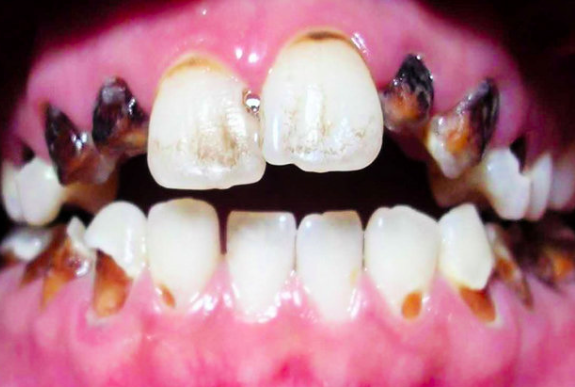
Table of Contents
If you did not have an addiction to meth, how different would your life be? If you did not spend as much money as you did on meth, would you be in a different place financially? Would you spend more time with your family? Exercise regularly? Take on new hobbies? Do better at your job? Live a happier life? Perhaps!
Do you know that nearly 6,000 people died in the United States from stimulant use, mostly meth in 2015? This is according to the Centers for Disease Control and Preventions. This number represents a 255 percent increase from 2005. Shocking!
We are all aware of the ongoing opioid scourge. Also real are numerous other addictions to other illicit substances. Methamphetamine is one of such. It has devastating effects on individuals, families, and society as a whole.
“I only had one hit. Just one hit! ……and BOOM! ………. I was hooked on meth. I have struggled with this thing for the last five years!” These are the words of someone I once treated for his addiction.
Read on to know more about this highly addictive drug.
 Meth is a powerful and extremely addictive stimulant. It is sold mostly as a pill, white powder or crystals. Meth is predominantly consumed by smoking, snorting, swallowing or injecting. This drug is widespread as it is quite easy to obtain. The reason for this is because of the ease of manufacturing it. People make meth in their homes with substances bought from pharmacies and grocery shops.
Meth is a powerful and extremely addictive stimulant. It is sold mostly as a pill, white powder or crystals. Meth is predominantly consumed by smoking, snorting, swallowing or injecting. This drug is widespread as it is quite easy to obtain. The reason for this is because of the ease of manufacturing it. People make meth in their homes with substances bought from pharmacies and grocery shops.
Crystal meth is similar to amphetamines – prescribed for Attention Deficit Hyperactivity Disorder (ADHD) and narcolepsy. While such amphetamines are legal prescriptions, crystal meth is illegal.
Users of meth report feeling a sudden “rush” of pleasure and a prolonged sense of increased well-being. They also experience increased confidence, more energy, improved focus, sexual prowess, and feelings of desirability. Interestingly, the pleasurable effects of meth seem to disappear over time. This lack of pleasure applies not only to meth but also to other sources of pleasure.
The loss of pleasure from meth occurs even with high blood concentrations of meth. As a result, individuals take more and more to get the same effect. This increase in use is known as tolerance. Meth users have been known to forego sleep and food while they binge for several days.
Crystal meth is the short form for crystal methamphetamine. Meth and crystal meth are essentially the same drug. The primary difference tends to be in the appearance and potency. Regarding looks, meth usually comes as a bitter-tasting powder or pill. On the other hand, crystal meth looks like glass fragments or shiny, bluish-white rocks.
The various forms of meth are not chemically different. They all contain the same ingredient – methamphetamine. The difference in form is merely a difference in the manufacturing process. Crystal formation is the key here. Meth production occurs via a process called recrystallization – a method that purifies the final product.
Slow recrystallization will produce larger, purer crystals. Fast recrystallization will, however, yield smaller crystals that are less pure. Furthermore, crushing either of these will lead to even smaller crystals. To get the powdered crystals, these can be ground even further. To clarify, the difference is primarily in the manufacturing process and the size of the substance.
There are several slang names for this drug. Some of these are:
According to the 2012 National Survey on Drug Use and Health (NSDUH), approximately 1.2 million people reported using meth in the past year. In 2012, there were 133,000 new users of meth aged 12 or older, and the average age of users was 19.7 years. The 2012 Monitoring the Future (MTF) survey of adolescent drug use and attitudes reported that about 1 percent of 8th, 10th, and 12th graders had used methamphetamine within the past year.
Per the Drug Abuse Warning Network (DAWN), methamphetamine accounted for about 103,000 emergency room visits in 2011 and was the fourth most mentioned illicit drug in ED visits following cocaine, marijuana, and heroin. The National Institute on Drug Abuse’s (NIDA’s) Community Epidemiology Work Group (CEWG) also stated that meth use continues to exhibit regional variability.
The New York Times published an article in February 2018 by Frances Robles. This write up was titled “Meth, the Forgotten Killer, Is Back. And It’s Everywhere.” This story highlights the scourge and resurgence of this illicit substance.
According to History, methamphetamine was first synthesized by a Japanese chemist in 1893. Before this, however, Amphetamine had been made in Germany in 1887. Meth was somewhat difficult to manufacture until 1919, when another Japanese chemist streamlined the process, creating the world’s first crystal meth.
During World War II, meth was used to keep troops awake. In the 1950s, it was prescribed for depression, weight loss, narcolepsy, and asthma. College students, athletes, and also truck drivers abused meth as it was readily available. The availability of injectable meth in the 1960s worsened the abuse. As a result, the United States government made it illegal for most uses in the 1970s. Meth abuse however increased dramatically, despite being outlawed.
Regulations around the sale of ephedrine, a precursor used to make meth, was tightened by the United States in the 1980s. This monitoring led to illegal meth labs utilizing pseudoephedrine, a compound found in cold medicines. By the 1990s, there were numerous “superlabs” in the United States manufacturing large amounts of methamphetamines. There were also smaller private labs springing up in kitchens and garages. Hence, the widespread use of this drug. It is relatively common to hear of law enforcement busts of “meth labs.”
The United States Congress passed the Combat Methamphetamine Epidemic Act in 2005 to curb the production of meth. This act requires pharmacies to keep logs of purchases of products containing pseudoephedrine. There are also to limit the number of such products sold per day to an individual. Even though this has helped to an extent, meth remains a public health issue in the United States.
Over the years, several different prescription medications have been made with chemical structures similar to meth. Adderall is a medication commonly used for treating attention deficit hyperactivity disorder (ADHD). Adderall has a similar chemical structure to methamphetamine but is safe when taken at prescribed doses and under medical supervision.
 Meth affects brain chemistry through a complex system. The effects of dopamine lie at the center of this process. There are several receptors in the brain, known as dopamine receptors. Crystal meth has been shown to damage these dopamine receptors in the brain and increases dopamine concentrations in various regions of the brain.
Meth affects brain chemistry through a complex system. The effects of dopamine lie at the center of this process. There are several receptors in the brain, known as dopamine receptors. Crystal meth has been shown to damage these dopamine receptors in the brain and increases dopamine concentrations in various regions of the brain.
Dopamine helps with motivation as well as reinforcement of rewarding behaviors. The disruption in dopamine from using meth can, therefore, corrupt the messages sent to different parts of the brain. As a result, this can affect decision making, learning, behaviors, and the reward system. Damage to the brain also manifests as compulsivity and impulsivity. Hence, the presence of risky behaviors in heavy meth users. High levels of dopamine in reward areas of the brain strongly reinforce drug-seeking behaviors.
According to Frontline, in lab experiments done on animals, sex causes dopamine levels to increase from 100 to 200 units, and cocaine causes a spike to 350 units. Meth, however, causes an increase to about 1,250 units, about 12 times as much release of dopamine as obtainable from food, sex, and other pleasurable activities.
Apart from dopamine, some studies have also shown changes in the brain of other chemicals such as serotonin, glutamate, and GABA. Meth causes severe damage to the brain. It is so addictive that it can be instantly habit-forming.
It is relatively common for people to regard addiction as a moral failure. Addiction is, however, a disease of the brain. The effects of illicit substances on brain chemistry show this. It is, therefore, necessary to get the right help for your addiction.
People who use meth may present with varying symptoms, including:
Studies have shown that meth destroys the blood vessels and tissues of the body, thus inhibiting the body’s ability to repair and heal itself. This defect leads to a loss of skin elasticity and luster, making users appear a lot older than they are. Despite these negative consequences, many individuals still abuse this dangerous substance. Unfortunately.
Psychosis refers to a loss of reality due to severe impairment in thoughts and emotions. This condition may manifest as hearing voices, seeing things, and feeling paranoid. Psychosis occurs in mental disorders such as schizophrenia, schizoaffective disorder, delusional disorder, bipolar disorder, and depression.
This loss of reality may also occur when people use illicit drugs such as cocaine, phencyclidine (PCP), ketamine, and methamphetamine. Such a condition is known as a Substance-Induced Psychotic Disorder. Most of such cases are usually short and last less than two weeks. Albeit short-lived, such psychotic breaks can be devastating to the individual. Such a duration is, however, not always the case for meth-induced psychosis. With crystal meth, psychosis can last for months and even years.
Some reports have shown that about 5-15% of cases of methamphetamine-induced psychosis fail to recover completely. Treatment of this condition is with antipsychotic medications such as Risperdal, Invega, Zyprexa, Abilify, and Vraylar. Even though these medications are helpful, like other medications, they also have various side effects.
The withdrawals from meth can be very uncomfortable. It is, however, generally not as bad an experience as observed with opioid withdrawals. Also, it rarely results in fatalities, which occur more with benzodiazepines and alcohol.
Stopping the use of methamphetamine without proper medical treatment can lead to severe withdrawal symptoms. These include:
In addition to the “high” (euphoria) caused by meth, this substance also has aphrodisiac properties. An aphrodisiac is a food, drink, or drug that stimulates sexual desire.
There is an entire subculture known as Party And Play. This group is prevalent in several major cities in the U.S., such as Atlanta, New York, and San Francisco. The culture of this group revolves around sexual activity and the use of meth. In most cases, the participants of such groups are gay males who also use crystal meth. Members of Party And Play typically meet up through internet dating sites and then rendezvous to have sex.
Crystal meth has potent aphrodisiac effects and also delay ejaculation. As a result of this, people involved in this subculture can have sexual encounters that continue for several days. These prolonged sessions are, however, followed by a crash that usually manifests in excessive daytime sleepiness.
In addition to the many other adverse effects of meth, this drug also causes severe damage to the teeth. The broken, discolored, and rotting teeth caused by crystal meth has come to be known as “meth mouth.”
Methamphetamine abuse causes extreme tooth decay. As a result, the teeth become blackened, stained, and rot with some of them breaking off. This damage can occur not just with long-term users, but also when used for short periods. A few reasons meth causes such damage to the teeth are:
“Beautiful Boy” is a movie directed by Felix Van Groeningen and starring Steve Carell, Timothée Chalamet, Maura Tierney and Amy Ryan. It centers on the memoirs Beautiful Boy: A Father’s Journey Through His Son’s Addiction by David Sheff and Tweak: Growing Up on Methamphetamines by Nic Sheff.
This movie is a narrative of the strained relationship between a father and his teenage son who is addicted to multiple illicit drugs, including crystal meth. It certainly sheds a lot of light, not just on meth addiction, but on addiction in general. An interview with Timothée Chalamet can be read here.
In the movie, when asked to go to rehab, Nic (Timothee Chalamet) initially told his dad (Steve Carrell) “I’m doing it for you.” This was indicative of his denial of the severity of his drug use. Referring to meth, Nic also made this statement – “when I tried it, I felt better than I ever had.” Another user in the movie described meth as such – “It’s like cocaine multiplied by a thousand.”
In the movie, Nic also states, “One day, I tried methamphetamine, and I thought …..this is what I’ve been missing. I felt complete.” This movie also talks about the fact that drug overdoses are now the leading cause of death for Americans younger than 50 years old. I certainly enjoyed watching the movie and think it is a movie worth watching.
 There are no FDA approved medications for treating crystal meth addiction. On the contrary, there are specific medications for addiction to alcohol and opioids. In the proper setting, however, “comfort medications” may be prescribed to ease the process of withdrawal. Some studies have shown some medications to be helpful in crystal meth treatment, but the evidence is not robust.
There are no FDA approved medications for treating crystal meth addiction. On the contrary, there are specific medications for addiction to alcohol and opioids. In the proper setting, however, “comfort medications” may be prescribed to ease the process of withdrawal. Some studies have shown some medications to be helpful in crystal meth treatment, but the evidence is not robust.
Though uncomfortable, withdrawal from meth is not life-threatening. Again, this is different from addiction to alcohol, and also benzodiazepines (such as Klonopin, Xanax, and Ativan).
Behavioral therapies are currently the most effective treatments for addiction to meth. Such therapies include cognitive-behavioral therapy, motivational enhancement, and contingency-management interventions.
Cognitive-behavioral therapy is a type of counseling that helps people understand the thoughts and feelings that influence their behaviors. In this case, these behaviors are those that cause their addiction to meth.
Contingency management interventions refer to providing incentives in exchange for treatment engagement and being able to maintain abstinence.
Motivational enhancement therapy attempts to initiate a change in behavior. It does this by encouraging people to resolve their doubts about stopping the use of meth, and also engaging in treatment.
In addition to the above, it is essential to treat underlying mental health disorders. The importance of this should never be underplayed. Treatment for depression, anxiety, post-traumatic stress disorder, bipolar disorder, ADHD and other mental conditions must be considered. It is well known that many individuals self-medicate with drugs.
Support from family and friends is crucial to the recovery process. There is a tendency to regard people addicted to meth and other illicit substances as moral failures. This generalization is rather unfortunate for a condition that results from a disorder in brain chemistry. Yes, I understand the argument of people having a choice to use or abstain. Let us, however, remember that many people experiment with drugs, but not everyone becomes addicted. There is a reason for this! Addiction is a disease and people are affected differently.
Some families understand addiction is a brain disease (medical model of addiction). Thus, they understand the difficulties of quitting drug use and also the likelihood of relapsing. Even with such families, it can be quite challenging to remain supportive.
The behavioral challenges that come with being addicted to meth can become overwhelming even for the best meaning families. Lying, stealing, manipulations, drop out from school and work, breakups from marriages, and financial distress are but a few of what could transpire from meth use. Ultimately, crystal meth abuse affects not just individuals, but also the society in its entirety.
Treatment is not a one size fits all! There are, however, several addiction professionals and treatment centers that do a great job. Depending on the level of addiction and circumstances, treatment for meth may be outpatient or inpatient.
As much as we would like to think that rates of relapse are low, this is unfortunately not the case. Rates of relapse even after treatment are quite high. Possible treatment failures make it even more critical to ensure you get the proper treatment from the onset.
There is no shortage of great treatment professionals and centers out there. I, however, recommend people perform their researches and perhaps work with an interventionalist. The idea is to get the best available individualized treatment. The best facility for one individual may not necessarily be the best for another. There are several factors to consider when considering a treatment professional or facility. I cannot over-emphasize the importance of a personalized approach to treatment! So, please get the help you need today and offer a helping hand to friends and family who may be struggling.
You have been using meth for several months! Years, perhaps!! Your use has caused blood, sweat, and tears. You want to stop and may have tried several times in the past. It is not impossible! There is help out there. If you are thinking about getting help with your addiction, don’t think. Just do it! Get the help you need.
The first step is acknowledging you have a problem. I have seen several patients who have been able to stop after several years of being addicted to meth. It is possible. Imagine how much better your life would be if you were free from this addiction.
Let’s go back quickly to summarize what we have discussed about meth.
In summary, meth is a highly addictive stimulant. It affects the brain through a complex system involving a chemical called dopamine. Crystal meth is so addictive that it can be instantly habit-forming. Repeated use of meth causes damage to the brain’s pleasure centers, making it increasingly hard to experience pleasure. Consequently, users continue to consume this drug just to avoid withdrawal symptoms.
A study on lab animals showed that sex causes dopamine in the brain to increase to 200 units. Cocaine causes a spike to 350 units. Crystal meth, however, increases dopamine levels to about 1,250 units! Shocking! …….and scary!!
Crystal meth can cause sweating, skin picking, weight loss, irregular heartbeat, vomiting, chest pain, decaying teeth, agitation, memory problems, mood swings, confusion, seizures, and psychosis.
Behavioral therapies are the most effective treatments for addiction to meth. There are no FDA approved medications for treating methamphetamine addiction. Treatment may be inpatient or outpatient, depending on the level of severity and the circumstances.
Rates of relapse can be high, and support from family and friends is crucial to the recovery process. Treatment is individualized, and the best treatment center for one person may not necessarily be the best for another. It may also be helpful to employ the services of an interventionalist.
“Beautiful Boy” is an enlightening movie starring Steve Carrell. This story shows the struggles of a young man who became addicted to meth and other drugs. It also gives a great perspective on the efforts of the family.
What do I want you to do today? Stop procrastinating! Addiction is a disease, and you need to get help. If you have obtained treatment in the past, and relapsed, get help again! Talk to a family member or friend for accountability and support. Look for a professional or facility to help with your recovery process. Great treatment professionals and facilities are just a phone call away. So, change your life. Pick up that phone and call today!
If you do not struggle with meth addiction but know someone who does, please offer as much help and support as you can. Also, share this article to help individuals struggling with crystal meth. This gesture will ultimately save someone. Meth destroys lives!
Subscribe to get our latest content by email.
The entire content of AddictionBlueprint, including content on drugs and alcohol, medications, therapies, facilities, spotlights, recommendations, and other features is for informational purposes only. It is not intended to be a substitute for professional medical advice, diagnosis or treatment. This does not constitute a physician-patient relationship. Please seek the advice of your physician or other qualified health providers regarding your addiction, mental and medical issues.

Jun 2019

Jul 2019

Jul 2019

Aug 2019

Aug 2019

Oct 2019

Sep 2019

Oct 2019

Nov 2019

Dec 2019

Jan 2020

Jan 2020

Jan 2020

Jan 2020

Feb 2020

Mar 2020

Feb 2020

May 2019